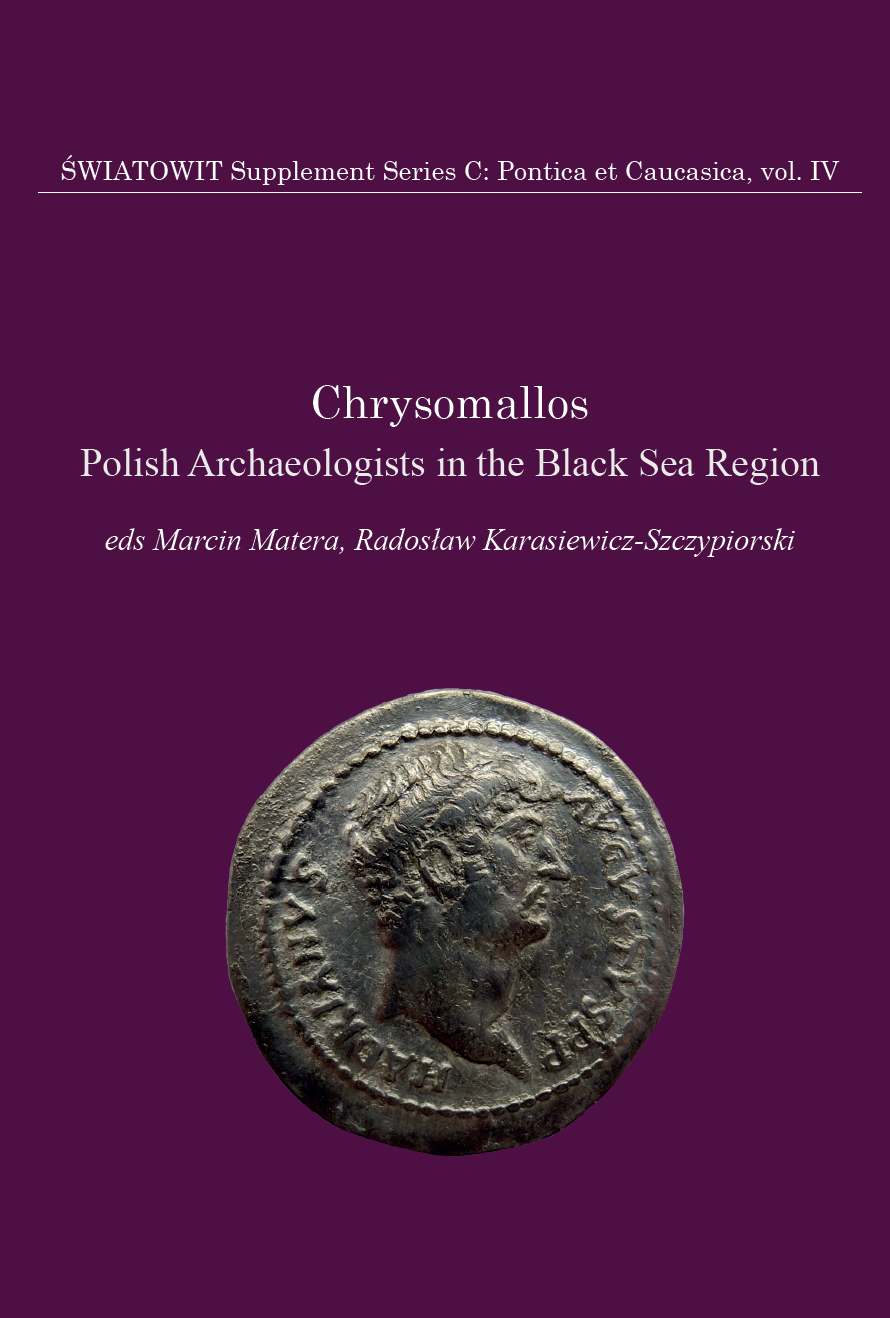The Assemblage of Archaic Handmade Pottery from V.V. Lapin’s Excavations at Borysthenes
The Assemblage of Archaic Handmade Pottery from V.V. Lapin’s Excavations at Borysthenes
Author(s): Nadiya O. Gavrylyuk
Subject(s): Archaeology
Published by: Wydawnictwa Uniwersytetu Warszawskiego
Keywords: Borysthenes; V.V. Lapin; handmade pottery; quantitative and qualitative methods; chronology of painted ceramics; Greek group; Thracian group; local group; forest-steppe group; Kizil-Kobyn group
Summary/Abstract: This paper considers a collection of ceramics that has not been published before, from the 1960–1980 excavations by V.V. Lapin at Borysthenes (Berezan’). The material presented here came from the fills of 46 semi-dugouts and 97 household pits of the archaic period from the “Osnovnoi” excavation on the site. Six groups of handmade pottery (“Greek”; “Thracian”; “local”; “forest-steppe” “Kizil-Kobyn” and “Colchian”) were distinguished in the ceramic assemblage of the archaic period of Borysthenes on the basis of their differing origin and contemporary analogies. The development of these groups can be examined in the framework of the three main phases identified on the basis of changes in their composition. The chronology of these phases can be determined, among other things, with reference to the chronology of the painted ceramics determined for the site by A.V. Bujskikh. The first phase dates to the second half of the 7th – the beginning of the 6th century BC; the second – first half of the 6th century BC; the third – the second half of the 6th – the first half of the 5th century BC. Some features of the development of the fine ware, table-ware, kitchen and household pottery were traced on the basis of quantitative and qualitative methods. Of note is the occurrence of the group of “Greek” handmade pottery and its changes in these phases. This group became predominant in the third phase. A number of quantitative and qualitative changes in the composition of the “non-Greek” group of handmade pottery are also identified. These lead to the conclusion that the population of archaic Borysthenes was polyethnic.
Book: Chrysomallos
- Page Range: 149-168
- Page Count: 20
- Publication Year: 2024
- Language: English
- Content File-PDF

